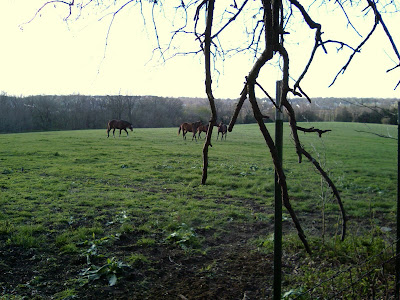"Guess I'm Lucky"


Guess Who? Devil's Bag, and then Woody Stephens and Wife in Lexington, 1946.
I just finished Woody's 1985 autobiography "Guess I'm Lucky" ghost written by James Brough. I wanted to read this to confirm my suspicion that it was Woody Stephens, with all his success, that began the transition from the hard training of Max Hirsch et. al. to the softer training in vogue the last 25 years. Hirsch's Belmont barn was right beside Woody's and they were good friends.
Was I on the mark in this thinking that it was Woody that began to back off of hard training, and that Woody was then emulated by numerous copycats?
After reading the book, I'll agree with Woody, he got lucky, starting with that wife. As in Baffert's book "Dirt Road To The Derby" there's a list of W. Stephens trained stakes winners in the back, but, it makes Baffert's impressive list look like chump change. 13 pages of stakes winners spanning 1940 to 1985 when the book ends with the near Belmont Stakes dead heat of Woody's horses Creme Fraiche and Stephan's Odyssey.
But, Woody writes nada about what his horses do in the morning. We learn they go out in sets, and he even describes them as they walk off, but, Woody deigns to describe his training. Maybe it was a state secret. We do read in the 200 pages every othere aspect of horse racing through Woody's eyes. This is also similar to Baffert's book where Baffert writes so little about his contact with his horses that you wonder if the guy ever goes to the barn.
Maybe lack of training information in these sorts of books reveals quite a bit about the mindset of these "trainers" concerning what they're really about, and why they are in horseracing. If they valued their actual training, you'd think they'd give us at least a word or two about what they do. So, I'm unable still to report what Woody did on the track other than a few scarce hints. I do have a very good understanding though of Woody as a man and racing icon after this book.
Woody's account is entertaining for anybody in horse racing. The book shows Woody as a stand up guy, but, you'll see next post that I am other than an admirer of his. Think Devil's Bag.
Today's training:
Actually, I have to catch things up to date. So much these days failing to happen! Got to the farm Saturday hoping against hope Art's hoof patch had held in the mud and rain. But, as expected, with the horn expanding and absorbing moisture and the patch being static, the patch came loose and was sucked off in the mud. Too wet to repair Saturday and so, passed on training.
Then the silver lining maybe of doing so little training the last three weeks. I get up Sunday morning, and the little fellow looks visibly taller. Is this the long hoped for growth spurt? A measurement showed a definite slight increase in height. I put a little extra calcium in his feed and kept my finger's crossed. Sunday eve I eyeballed and he looked taller yet. Optical illusion? Measurement showed significant growth "since this morning"! The little fellow needs to get to 15"3.5" We're just a shade under 15'3" now. I repaired the patch with plans to exercise, and then the thought: do you train on the very day of a growth spurt? I think you leave it alone, and so, rested again on Sunday.



































.jpg)
